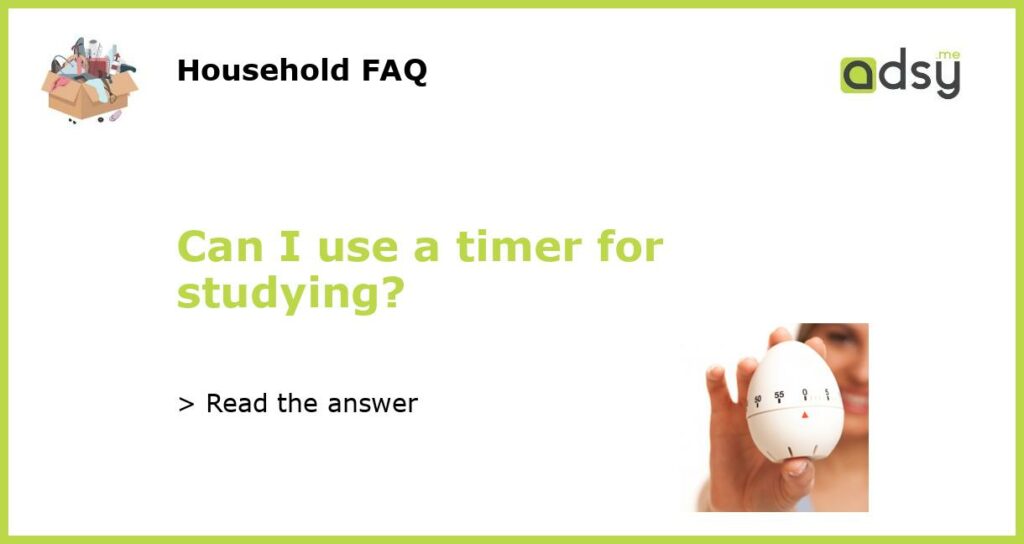Yes, you can use a timer for studying
Using a timer for studying can be an effective way to improve focus and productivity. Setting a specific amount of time to dedicate to studying can help you break your work into manageable chunks and keep you on track. This technique is known as the Pomodoro Technique and has been praised by students and professionals alike for its ability to enhance concentration and reduce burnout. In this article, we will explore why using a timer for studying can be beneficial and how to implement it effectively.
Why use a timer for studying?
Using a timer for studying can have several advantages. Firstly, it helps you manage your time more efficiently by allocating specific periods for focused work. Knowing that you have a limited amount of time to study can help you avoid distractions and stay focused on the task at hand. Additionally, using a timer can make studying less overwhelming by breaking it down into smaller, more manageable intervals. Instead of trying to tackle a large amount of work in one sitting, you can divide it into shorter study sessions, which can be easier to digest mentally.
How to implement a timer for studying effectively
To implement a timer for studying effectively, follow these steps:
- Choose an appropriate interval: The Pomodoro Technique suggests working for 25 minutes, followed by a 5-minute break. Experiment with different intervals to find the duration that works best for you.
- Set realistic goals: Determine what you want to accomplish during each study session. Setting SMART (Specific, Measurable, Achievable, Relevant, Time-bound) goals can help you stay focused and motivated.
- Eliminate distractions: Turn off notifications on your phone or computer, find a quiet space to study, and remove any potential distractions from your surroundings.
- Start the timer: Use a physical timer or a timer app on your phone or computer to track your study sessions and breaks.
- Take breaks: After each study session, take a short break to rest and recharge. Use this time to stretch, get a drink of water, or do something enjoyable.
Tips for using a timer effectively
Here are some additional tips for using a timer effectively during study sessions:
- Experiment with different durations: While the Pomodoro Technique suggests 25 minutes of work followed by a 5-minute break, you can modify these intervals to suit your preferences and concentration levels. Some people find shorter study periods of 15 minutes followed by 3-minute breaks more effective.
- Stay disciplined: It can be tempting to ignore the timer and continue studying when you’re in a state of flow. However, sticking to the predetermined intervals will help prevent burnout and maintain your energy levels throughout the day.
- Use a visual timer: Consider using a visual timer, such as an hourglass or a countdown app with a progress bar. These visual cues can provide a sense of urgency and help you stay focused.
- Track your productivity: Keep a record of your study sessions and the tasks you completed during each session. This will not only help you track your progress but also provide motivation to see how much you have accomplished over time.
- Adjust as needed: Everyone has different study preferences and concentration levels. Feel free to experiment with the duration of study and break intervals to find what works best for you.
In conclusion
Using a timer for studying is a simple yet effective strategy to enhance focus, manage time, and improve productivity. By breaking your study sessions into smaller, more manageable intervals, you can stay more engaged and avoid burnout. Experiment with different durations and find what works best for you. Remember to eliminate distractions, set realistic goals, and take regular breaks to recharge. With consistent practice, using a timer for studying can become a valuable tool in your academic or professional journey.






